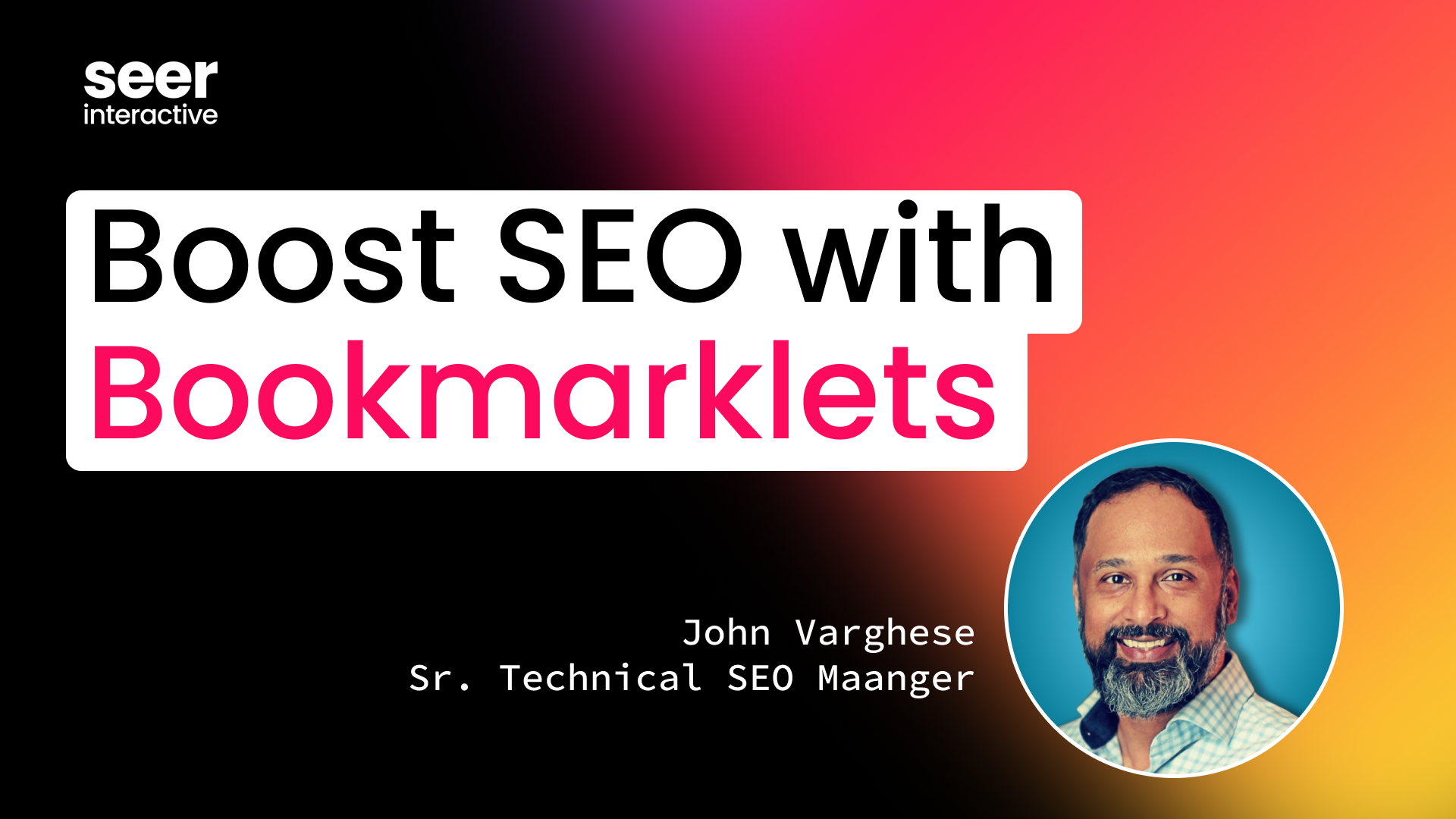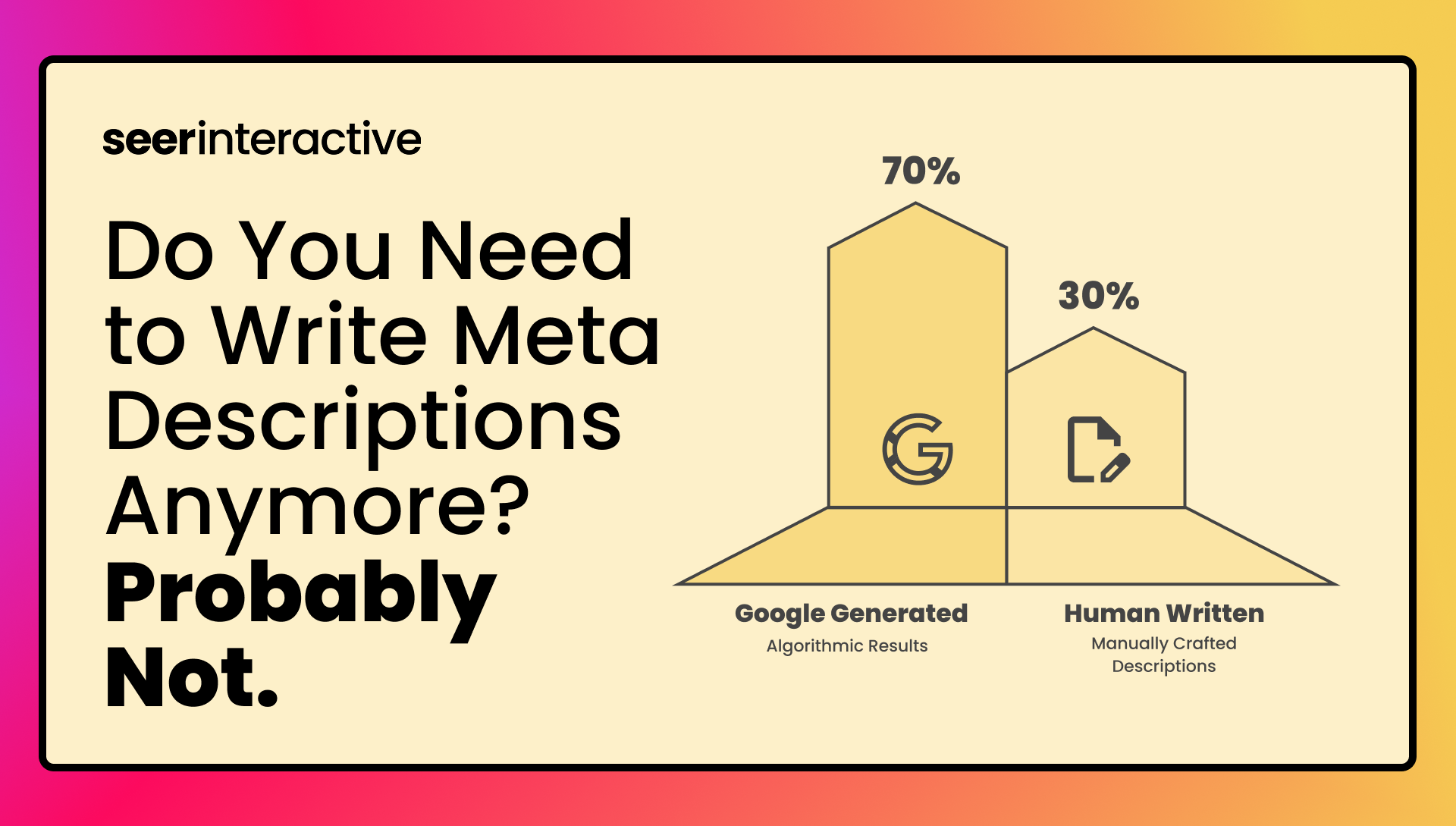We all know the old adage: is marketing is an art or a science?
At Seer, we think it’s both. But not necessarily both at the same time. We believe the better question is: which comes first in marketing, art or science?
And if you ask us that question, we’d tell you it’s a science first.
"The science of marketing is all about using data and insights to drive your strategy. The art of marketing is how you express that strategy."
Now that we know we are starting with science, what does that mean exactly?
Well, remember when you were in school and you had to come up with your own science research experiment? Remember what came first? The objective. Why? Because without an objective, you don’t have a testable proposition. And without a testable proposition, you don’t have direction. And we all know that when research doesn’t have a direction, it typically doesn’t garner any groundbreaking takeaways.
So, what does your high school science experiment have to do with marketing research?
Similar to the traditional objective, a great marketing research plan starts with a strong objective. One that is focused, measurable, and effective. Without a clear objective, your marketing research will not be as successful.
What is a Marketing Research Objective?
[TIP] By definition, a "Research Objective" is a statement of purpose that outlines a specific result to achieve within a dedicated time frame and available resources.
Applying this logic to marketing, a marketing research objective is a statement that outlines what you want to know about your customer. Clearly defining your objective at the beginning stages will help you avoid conflicting expectations or wasted collecting irrelevant data.
How Do You Create a Marketing Research Objective?
Start at the end. I know it sounds counterintuitive, but if you start with the desired outcome, you will be able to create a more focused objective. What’s the one thing you want to be able to take away from this research? What do you plan to do with the information? What does success look like? Use this objective as your compass while you navigate your research and analysis.
Typically, it’s easiest to do this in the form of a question. Here are a few examples.
- Example 1: Which features in Product X are most important to our Enterprise customers?
This question will give you a list of features, in order of importance, for your Enterprise customer.
- Example 2: What are the different search triggers amongst our four customer segments?
This question will result in a list of common factors that result in users searching for Service Y.
When you start seeing all the data points, behaviors, and survey responses - curiosity can set in.
An abundance of data can pull you in multiple directions because each finding is interesting in its own right. That’s when your objective comes in. Know the end result you are working toward and stay on that path.
Creating a Research Objective
Once you’ve got your desired outcome, you’ll want to create your objective. A few things to consider as you create your statement:
- Where does this fit into your marketing strategy? Where does this objective fit into your larger marketing strategy? Not only is this helpful when dispersing information internally or getting buy-in, it keeps the research team focused on the higher business objectives attached to this research. Is this part of your company’s focus on brand awareness? A new product launch? An analysis of competitors? These are all very different things.
- Include your target audience. Typically, it’s difficult to understand everything with every user segment so pick which segment you plan to analyze. Is it your Enterprise customers? Customers living in a specific region? A certain demographic segment? Including this in your objective will be a helpful gut check when choosing participants.
- What will you measure? You don’t need to list out all of the data points you plan to measure, but there should be some measurable element in your objective. Is it sentiment? Are you looking for frequencies? What about behavioral trends? Including this in your objective will ensure you pick the most appropriate research methodology to acquire that measurable element.
- A behavior. What is the behavior or action that we are going to be researching? Is navigating your website? Is it purchasing a product? Is it clicking on an ad?
Let’s look at some examples:

Common Marketing Research Objective Pitfalls
While creating an objective may seem relatively straightforward, it can be easy to get wrong. Let’s go over some of the common pitfalls.
Objective is Too Broad
Now, if you follow the outline above, this shouldn’t be an issue because it forces you to get granular with your objective.
- Specific: As part of our rebranding, we are conducting a sentiment analysis with our recurring customers
- Broad: As part of our rebranding, we will ask customers how they feel about it
We want to avoid broad objectives because they can allow curiosity to get the best of us and a once seemingly clear research project can get muddied.
More Than One Objective
Every research project should have one objective and one objective only. Again, while this may seem easy enough to manage, you’d be surprised just how easy it is to sneak those secondary and tertiary objectives into your statement.
- One objective: We aim to understand what questions our customers have when considering purchasing a car
- Two objectives: We aim to understand what questions our customers have when searching for and considering a car
You see, the questions customers may have when searching for a car could be completely different than the questions they have when considering purchasing a car.
Making Assumptions
Avoid making your objective into a hypothesis with absolute statements and assumptions. Your objective should be more of a question than a prediction. That comes later.
- Objective: Uncover the purchase journey of our target demographic
- Assumption: Uncover what part search plays in the purchase journey of our target demographic
This looks unsuspecting, but in reality, we're already assuming that search plays a role in our audience's journey. That could sway the focus of the research.
Once you’ve created your objective, let it (and only it) drive the beginning stages of your marketing research.
Write it on a post-it and stick it on your desk, write it on the whiteboard at every meeting you have, keep it top of mind as you continue your research. It will serve as a compass and help you avoid being led astray by interesting data, curious colleagues, and conflicting agendas.
More Tips for Understanding Your Audience
Check back on the Seer blog for the next installment from our Audience team. Sign up for our newsletter to read the latest blogs on audience, SEO, PPC, and more.


